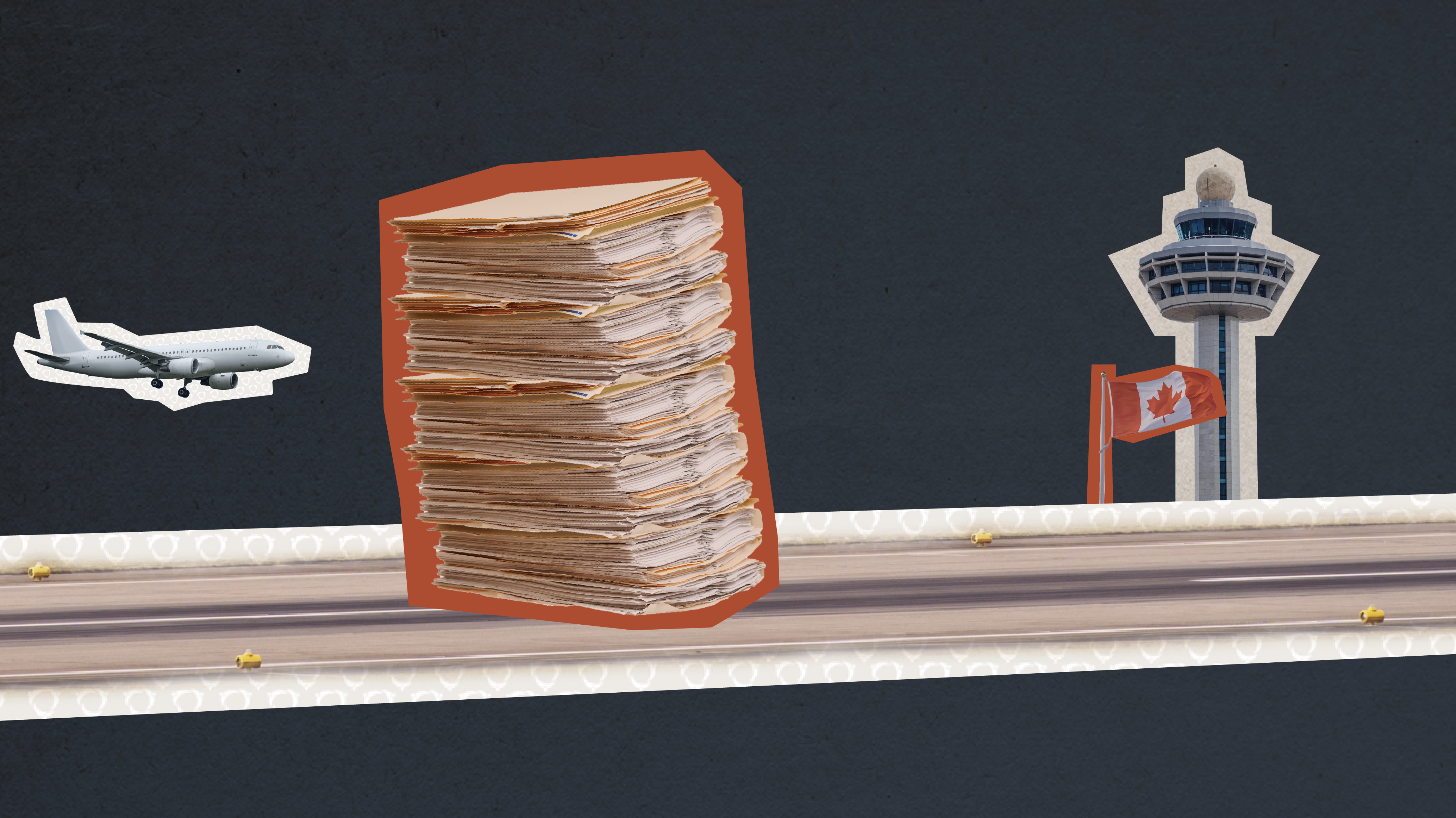Updating business managers with what you need to know, right now:
This quarter’s legal update looks at a number of recent developments in immigration and employment law.
Employment lawyer James D. Kondopulos discusses British Columbia’s new paid sick leave program and analyzes the law around wrongful resignation.
Immigration lawyer Stanley Leo discusses processing backlogs and leaked memos from the IRCC, a re-examination of so-called low-skill jobs, and the Canadian Immigration Lawyers Association.
Pressed for time? Skip ahead.
Employment Law with James D. Kondopulos
S1:01 Mandatory Paid Sick Leave in British Columbia
S1:02 Wrongful Resignation Claims
Immigration Law with Stanley Leo
S2:01 Backlog on Permanent Residence and Other Processes at IRCC
S2:02 Pathway to PR for So-Called ‘Low-Skill Workers’
S2:03 Canadian Immigration Lawyers Association
Interview with James D. Kondopulos, Employment and Labour Lawyer/Founding Member and Partner at Roper Greyell LLP
S1:01
Mandatory Paid Sick Leave in British Columbia
GB: BC recently became the first province in Canada to make mandatory paid sick leave a permanent feature of its employment landscape. Can you explain the specifics of this program?
The statutory paid sick leave entitlement includes up to five paid sick days and is immediately available to all employees who have completed 90 days of employment. The entitlement runs per employment year, not per calendar year, and there is no proration for part time employees, or employees hired for temporary periods of less than a year. If the employee completes 90 days of employment, he or she is entitled to the leave.
In addition to those five paid sick days, there is also the previously available three unpaid sick days, for a total of eight days per year of statutorily protected sick leave. There’s no carry forward, and they’re not paid out on termination, as would be the case, for example, with accrued and outstanding vacation pay.
GB: Does it apply to all employees in the province?
It applies to all employees covered by the BC Employment Standards Act, including part time and temporary or casual employees. It excludes federally regulated employees, as well as independent contractors, and those in certain professions, such as CPAs, doctors, and lawyers, who are governed by regulatory bodies.
GB: What promoted this new legislation?
The goal, of course, is to encourage employees to stay away from work when they are sick. The provincial labour minister expressed particular concern for vulnerable workers; those in low paying jobs, which often include women and racialized people.
At the same time, and to be fair to both sides here, we need to recognize the substantial impact on business as well. This represents a significant new financial burden for employers, which are already experiencing payroll cost pressures as a result of cumulative changes over the last several years, including the introduction of the BC Employer Health Tax, changes to CPP and EI, and, frankly, paid leave to go and get vaccinated. There are lots of new payroll cost challenges for BC employers and these statutory changes come on top of that.
GB: Are there safeguards in place to prevent abuse?
Employers can request reasonable sufficient proof – medical notes for example – and the employee has to provide that proof on request as soon as possible. That’s an important controlling mechanism in this new statutory scheme.
GB: How will this affect unionized and non-unionized workplaces that may already have policies in place?
In some non-unionized workplaces employers already had paid time off policies. I suggest employers in that situation take a careful look at their policies to assess exactly what they say and provide. You don’t necessarily want the ESA’s ‘up to 5 paid sick days’ to be available in addition to the paid time off already available under the employer policy. A simple tweak might be to make clear that your paid time off policy applies strictly to sick time.
Unionized employers are going to want to look very carefully at their collective agreement, particularly the provisions related to leaves of absence for illness, injury, or medical situations, and assess whether those provisions meet or exceed the employment standards minimum statutory requirements. It’s a difficult and nuanced analysis. I suspect there will be much discussion at bargaining tables around the province to deal with issues arising when the collective agreement provisions do not meet or exceed the employment standards requirements. For both the non-unionized and unionized workplaces I suggest professional advice be taken, probably from legal counsel.
S1:02
Wrongful Resignation Claims
GB: We’ve been hearing more about wrongful resignation claims. What’s behind this trend?
It’s not a new issue, but it has taken on some significance in the past weeks and months, and will be significant to employers in the time ahead. We’ve heard the term “the great resignation” thrown around and, frankly, I am seeing employees walk away from jobs with little to no notice, and en masse.
Wrongful resignation is a corollary of wrongful dismissal, and it entails the failure of a departing employee to provide his or her employer with sufficient advance notice of resignation. Where it’s going to be important is where the contract does not speak to the amount of advanced resignation notice required, or where the contract defines the amount of notice, but the requisite notice is not given. There is a potential cause of action for the employer in those circumstances.
GB: What is the nature of the damages claimed by employers?
The damages the employer might be seeking will be a function of the time required to find a suitable replacement employee. What we have going on in the background is heavy pressure on labour supply- a strong demand for good capable employees. Expenses involved in finding a replacement might include temporary coverage, recruiting or headhunting on a tight timeline, or a shutdown of operations, all of which will play into a potential damages claim against the departing employee.
GB: Do you expect to see a large number of these claims in the near future?
Frankly, in many circumstances the employer will not be bothered. It may be that the employer does not want that sort of negative publicity in the marketplace – it vindictively or mercilessly went after a departing employee. Then again, it might want to set a precedent. A wrongful resignation, where properly founded, might be great leverage in a legal dispute. I’m not promoting frivolous or vexatious claims, but if the circumstances warrant a wrongful resignation claim, it might be a counterclaim made against the departing employee.
Interview with Stanley Leo, Immigration Lawyer at Lowe & Company
S2:01
Backlog on Permanent Residence and Other Processes at IRCC
GB: What’s currently making news in the world of immigration law?
Either an immigration lawyer or a consultant obtained some internal memos from the federal government which indicated that, internally speaking, there’s such a significant backlog in permanent residence applications that they’re not expecting to invite any new skilled worker applicants for a while. Much of this is due to the situation with Afghanistan and the need to prioritize applicants from that country.
Unless a person is classified as a provincial nominee, they’re basically facing a potential indefinite freeze on their ability to even apply for permanent residence. The suspicion is that it might take six months to clear a significant part of the backlog, but no one really knows for sure at this point. The main affected system is the Express Entry system which is an intake system for skilled worker immigrants.
It’s a points based system and, when they do begin inviting people again, the minimum point score required to get an invitation is expected to skyrocket. A lot of people are probably going to be locked out of the system for quite a while.
GB: What do backlogs at the IRCC mean for Canadian employers?
For employers that are trying to help some of their workers transition to becoming permanent residents, it’s quite likely that those who have not already applied will have to look at some kind of extension of their temporary resident status with a work permit.
It’s also a concern for employers looking to bring in workers quickly. They may have to apply for a Labour Market Impact Assessment first. The LMIA is taking between three to four months to get, and that’s after the employer has advertised for a minimum of four weeks. Once the employer gets the LMIA the worker can apply but, in many cases, processing that work permit might take another four or six or even eight months, depending on where they’re from. For employers that need to be able to count on having labour quickly, within a predictable timeframe, the current situation makes it extremely difficult to plan effectively.
S2:02
Pathway to PR for So-Called ‘Low-Skill Workers’?
GB: We’ve spoken in the past about the evolution in the way that society, as well as the government, views so-called ‘low-skill workers’. Has there been any movement in this area?
One of the things that was identified last year in the Temporary Residence to Permanent Residence pathway was the fact that there were very few PR pathways for many of the workers who helped Canada get through the pandemic. Before the pandemic there was almost no pathway for permanent residence for people occupying jobs that were previously considered ‘low-skilled’, such as those stocking shelves.
I think it’s become clear that there are many foreign nationals who occupy those jobs and who are providing a lot of help to Canadian society and our economy. In the long run opening up pathways for PR for these workers might be beneficial, but that’s still not how the current system is built. Outside of the TR to PR pathway, there still aren’t many programs that are geared towards helping people who work in those jobs apply for permanent residence. That might shift. In periods of crisis, there’s also opportunity.
The most major upcoming change involves the revision of occupational classifications, which will be made official later this year. There might be some shifts of certain occupations that are considered low-skilled into what might be considered high-skilled, as well as an accompanied shift in language in the actual immigration regulations.
S2:03
Canadian Immigration Lawyers Association
GB: What is the mandate of the new Canadian Immigration Lawyers Association?
As a stakeholder in Canadian immigration, the organization makes recommendations based on their insight into the ways people are approaching the system and what kinds of problems they’re experiencing.
There are common problems that frustrate immigration lawyers to no end, such as the government suddenly issuing new forms without any official policy on whether they’d accept older versions of the forms. Sometimes there are no substantive changes in the new form version.
It’s often just as frustrating for us as it is for our clients, because we do care about our clients. Things could be done in a way that is much less prejudicial and creates a lot less work for all involved.




